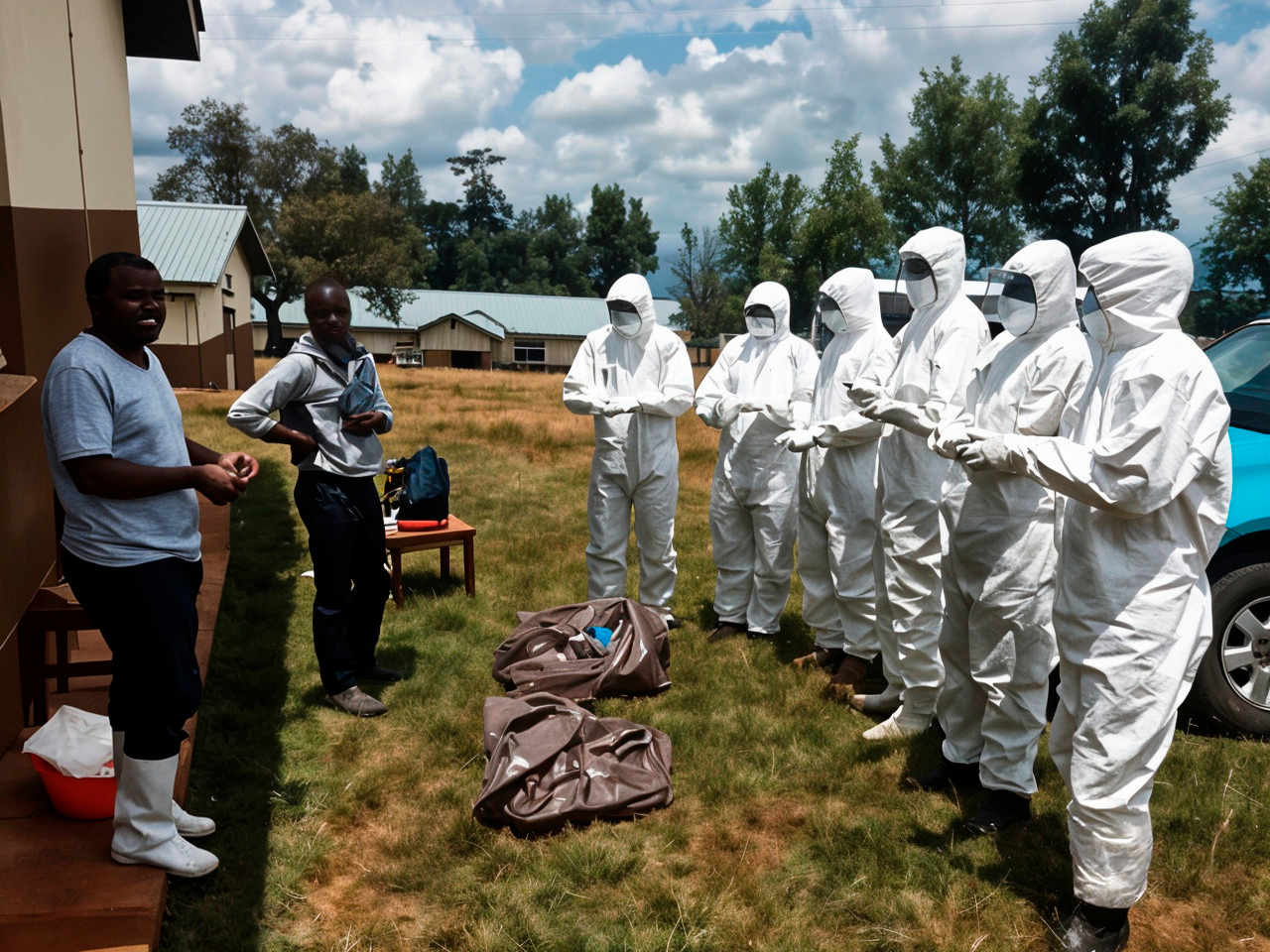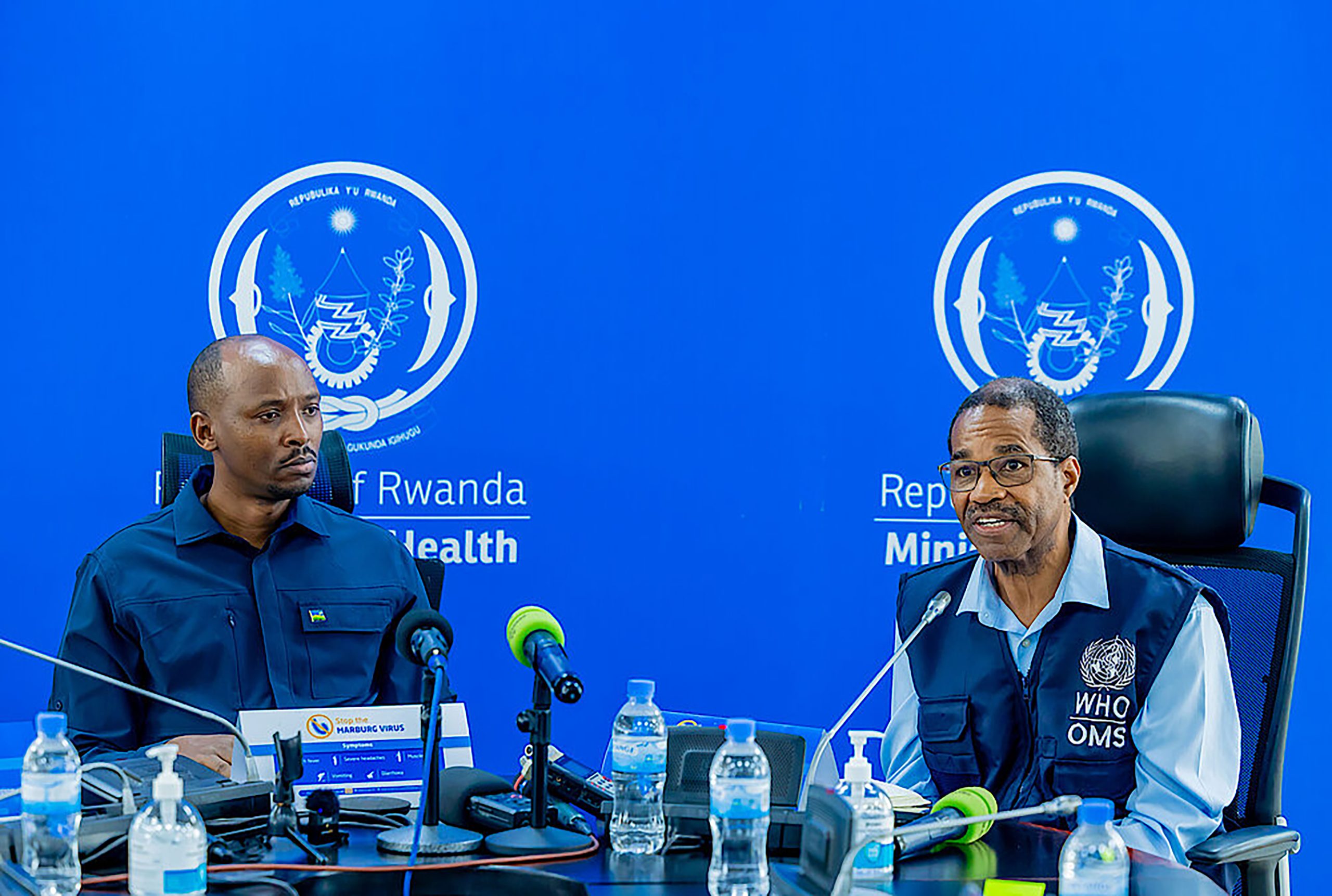Rwanda Faces Marburg Virus Outbreak Amid Efforts to Contain Spread

The Marburg Virus Disease (MVD), an Ebola-like virus with a fatality rate of up to 88%, has emerged as a severe concern in Rwanda, with the first case confirmed on September 27. As of October 9, the outbreak has resulted in 12 deaths, with dozens more receiving treatment. The rapid spread and severity of the virus have drawn attention from national and international health officials.
Authorities, including Health Minister Dr. Sabin Nsanzimana, have assured the public that measures are being implemented to prevent a more significant crisis. The government’s message is clear: “Don’t panic.” Yet, the urgency of the outbreak has required swift action and put Rwanda’s response under international scrutiny.
Rwanda’s healthcare system faces significant challenges as it contends with symptoms, including widespread patient bleeding. The response has been characterized by quick mobilization and coordination of medical personnel, but the situation remains critical.
What is Marburg Virus Disease and Origin?
Marburg Virus Disease (MVD) is a rare, severe illness caused by the Marburg marburgvirus (MARV), part of the Filoviridae family, which also includes the Ebola virus. The disease leads to hemorrhagic fever, resulting in internal bleeding and other serious symptoms. The virus spreads through contact with bodily fluids, and fruit bats are considered its primary natural hosts. The exact source of the current outbreak in Rwanda is still being investigated.
After an incubation period of up to 21 days, symptoms can emerge gradually. Common signs of infection include:
● Muscle and joint pain.
● Gastrointestinal symptoms.
● Fever.
● Headache.
● Tiredness.
● Loss of appetite.
As the disease progresses, more severe symptoms may develop, such as:
● Gastrointestinal issues (severe diarrhea, nausea, abdominal pain, and cramping).
● Vomiting.
● Hemorrhagic symptoms (bleeding gums, nosebleeds, and traces of blood in the stool).
Authorities are concerned that the virus might have circulated undetected for weeks, given the rapid identification of cases.
Origin and History
The Marburg virus was first identified in 1967 during outbreaks in Frankfurt and Marburg, Germany, and Belgrade, Serbia. These initial cases were linked to laboratory work involving African green monkeys imported from Uganda. Since then, sporadic outbreaks have occurred, mostly in African countries, including South Africa, Uganda, the Republic of Congo, and Angola. A notable incident in 2008 involved two cases in Uganda, traced back to a cave inhabited by Rousettus bats, underscoring the virus’s zoonotic origins.
Current Situation
The outbreak’s confirmation on September 27, 2024, triggered widespread concern in Rwanda. Even before the announcement, misinformation had fueled public anxiety, with fears reminiscent of the COVID-19 pandemic. One resident remarked, “If the virus spreads, we might face another lockdown.”
The World Health Organization (WHO) has not been optimistic, assessing the “risk of this outbreak as very high at the national level, high at the regional level, and low at the global level.” Social media has seen a surge of information, including video clips allegedly shared by medical workers and numerous messages—many of which have been misleading or outright false, contributing to widespread fear.
With the memories of COVID-19 still fresh, it is understandable that the public would react strongly. The pandemic was a difficult time for many, and the thought of another potential health crisis, like Marburg, quickly stirs anxiety.

What the Experts Say
Experts emphasize that Marburg should not be compared to COVID-19, which poses a more significant threat due to its airborne nature. The Marburg virus, transmitted through contact with bodily fluids, is considered easier to contain.
Dr. Sabin Nsanzimana, Rwanda’s Minister of Health, reassured the public on his X (formerly Twitter) account, stating, “People can continue with their daily activities—there is no ban on any activity as part of the Marburg prevention measures. People should not panic as we have identified all the hotspots of the disease and are taking appropriate action.”

Coordinated Response to Contain the Marburg Outbreak
Rwanda has implemented a multi-faceted approach to manage the Marburg virus outbreak, focusing on containment, public safety, and preventive measures. The strategy includes contact tracing and isolating suspected cases for testing and treatment, minimizing transmission risks. Infection prevention protocols for sanitation, water, and hygiene have been enforced across healthcare facilities nationwide, with the support of the WHO, which also facilitates laboratory testing for accurate diagnosis.
To enhance public safety, the government has intensified communication efforts to dispel misinformation and inform communities about prevention. The Ministry of Health has made a hotline available for reporting symptoms, enabling rapid detection and intervention. In collaboration with neighboring countries, Rwanda is bolstering its readiness to address potential cases and prepare unaffected areas.
Preventive advice emphasizes personal hygiene, such as regular handwashing, using protective equipment, and avoiding high-risk areas. For those affected, isolation remains crucial to prevent further spread, following guidelines from health authorities.
Is there a chance to survive MVD?
While Marburg has a high fatality rate, many people in Rwanda are recovering with proper care. Early identification of symptoms increases the chance of survival, although some long-lasting effects may occur, such as:
• Muscle pain
• Hair loss
• Memory issues
• Skin peeling
Ongoing care helps manage these complications, allowing many patients to return to their daily lives. WHO and other experts advise that MVD can persist in semen even after recovery, so it’s important to avoid activities that involve exchanging bodily fluids or to use protection and continue regular check-ups until confirmed as no longer contagious.
What’s Next for Rwanda and All of Us?
Rwanda is intensifying its fight against the Marburg virus with a new vaccination campaign focused on healthcare workers and those most at risk. The vaccine, received through a partnership with the Sabin Vaccine Institute, has undergone clinical trials in other African countries, demonstrating a strong safety and efficacy profile. This initiative aims to protect frontline workers and curb the virus’s spread, while also reassuring the public about the vaccine’s benefits.













